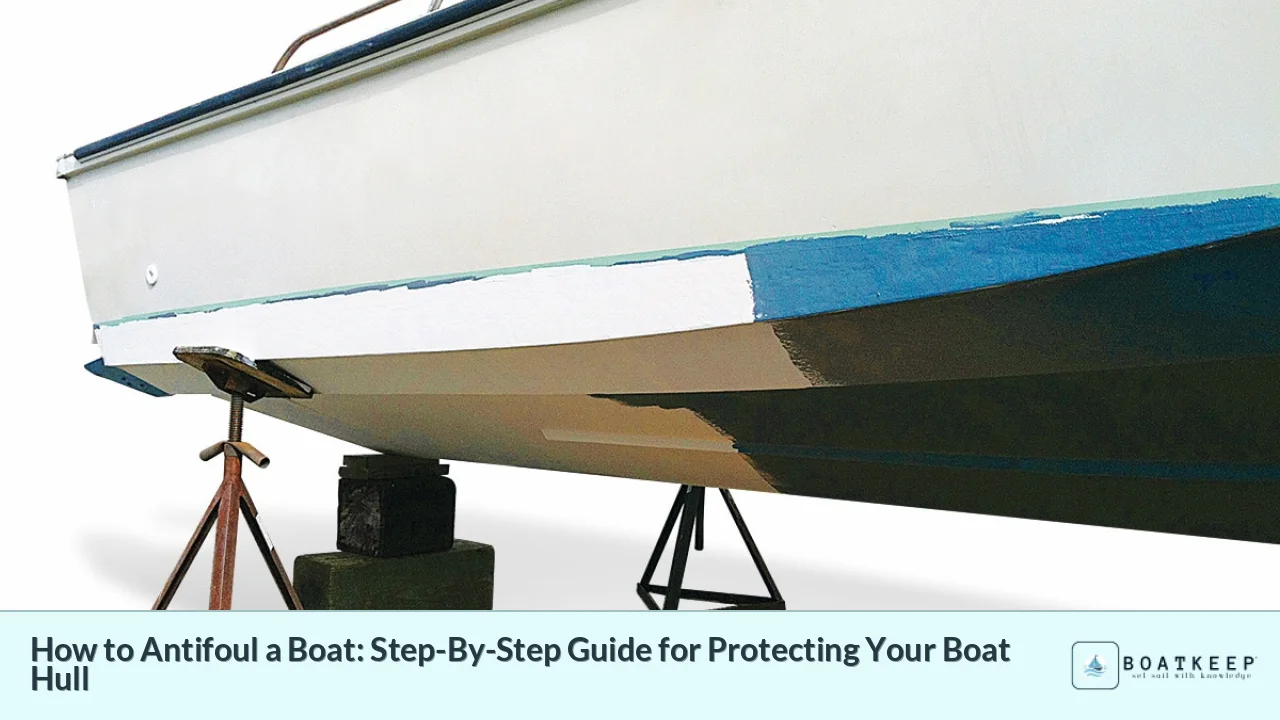Antifouling paint is a crucial application for the underwater hull of a boat. Its main purpose is to inhibit the growth of marine organisms that can adhere to the hull over time, leading to a negative impact on the boat’s durability and performance. As the paint builds up over the years, it becomes necessary to strip it back to the bare hull, typically recommended every four or five years.
Antifouling is often considered a daunting maintenance task for boat owners, given the wide array of antifoul products available in the market. However, having multiple antifouling coats on the hull can make the stripping process easier in the long run.
We will guide you through the essential steps of antifouling your boat’s hull, but before we begin, let’s cover some basic information.
Understanding Different Types of Antifouling Paint
Antifouling paint comes in three basic types: hard, eroding, and copper-based. Each type has its own unique characteristics and is suitable for different types of boats and usage.
Hard Antifoul
Hard antifoul is the original type of antifouling paint. It is tough enough to withstand wipe downs with a sponge or soft cloth without significant paint removal. While it is abrasive in the water, it does not wear away to a great degree. However, after multiple applications, the build-up of hard antifoul becomes structurally unsound and needs to be stripped back. This type of antifoul is ideal for high-performance craft that are used frequently, as well as for boats moored in fresh water.
Eroding Antifoul
Eroding antifoul lives up to its name by wearing away over time, eventually leaving the hull unprotected. The new generation of eroding antifoul paints work by using water’s friction to remove the paint thickness, exposing fresh layers of biocide. As the paint film thins, the biocides are washed out, leaving a bare surface.
Copper-based Antifoul
Copper-based antifoul paints use copper particles suspended in an epoxy coating. They are long-lasting, offering protection for up to 10 years, but they are also the most expensive option among the three types. These paints are highly effective and provide excellent long-term protection against fouling.
It’s important to note that each boat manufacturer will recommend the most suitable antifouling paint for each type of boat, taking into consideration the specific needs and usage of the vessel.

Upon inspecting your boat’s hull, it is crucial to closely examine its condition. The first thing to do is to check for eroding antifoul, as it should have mostly removed itself from the hull.
### Craters
One thing to look out for is the presence of craters. Ideally, the hull should have a smooth appearance and not resemble the moon’s surface.
### Flaking
Another sign to watch for is flaking, which occurs when paint has peeled off and left rough edges.
### Blisters
Lastly, be on the lookout for blisters, which are formed when water becomes trapped between the paint and the hull.
If your hull displays any of these signs, then it’s likely time to consider antifouling.
Ensuring Safe Application of Antifouling Paint
When it comes to applying antifouling paint, it’s important to prioritize safety. The process can be dirty and hazardous, so taking the necessary precautions is crucial. This includes wearing full protective clothing, such as an effective face mask and goggles. It’s important to note that antifouling dust is poisonous, and therefore, a simple decorator’s mask will not provide sufficient protection. Throughout the entire antifouling process, it’s essential to wear the appropriate safety equipment.
How to Prepare and Apply Antifouling Paint to a Boat
Preparing the Hull
To start the process of antifouling a boat, the hull must be pressure washed to remove any existing fouling. After this, it is advisable to use a degreaser and scrape off any flaking or loose paint. Stripping the hull back to a sound surface is recommended if there are many layers or large areas where the paint has adhered poorly. There are three basic methods of preparing the hull for antifouling:
-
DIY scraping
The cheapest method but labor-intensive. Sharp scraping blades should be used to avoid digging into the hull.
-
Chemical stripping
This method is quicker than scraping, but it’s crucial to use the correct products for the hull material to avoid damage.
-
DIY soda blasting
Considered the least labor-intensive method but also the most expensive. This can be carried out by a competent DIYer.
Once the hull is prepared, the waterline should be marked and the surface should be keyed to enable the paint to adhere properly.
Priming
Priming ensures that the antifoul adheres properly to the hull. It is important to thin the primer down by around 10% and apply it gently to the prepared hull using a medium-sized paint roller. The paint should be applied right up to the masking taped line and left to cure completely.
Applying the Antifouling Paint
Once the primer has dried, the antifouling paint can be applied lightly and evenly. Special attention should be given to areas with greater wear. Two coats of antifoul are recommended, and the paint should be stirred regularly throughout the process. It’s important to keep the zinc sacrificial hull or shaft anodes clear of any paint.
Tips for Painting
- – Remove the masking tape as soon as the paint has turned tacky.
- – Avoid vigorous brush strokes to prevent disturbing the primer.
- – Use a rag and thinners to remove any splashes or drips.
No antifouling will keep a boat completely slime free, but it performs best when the boat is well used. Therefore, choosing the most appropriate antifouling and getting out onto the water is essential for optimal performance.

